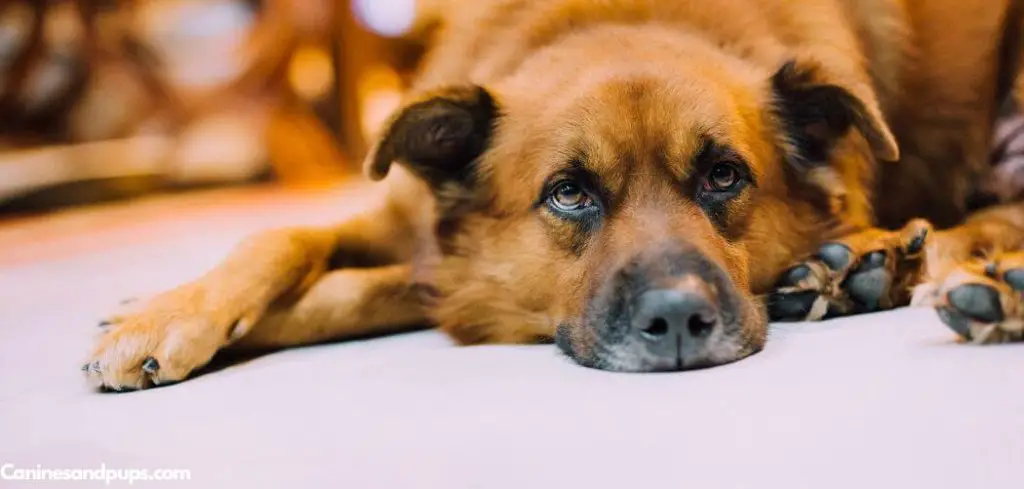Panting and grunting in dogs can sometimes be normal, but when they occur together or seem excessive, they may signal that something isn’t quite right.
Panting helps dogs regulate their body temperature, while grunting often reflects physical discomfort or breathing difficulty. When these two sounds combine, it could indicate anything from mild stress or fatigue to underlying health issues.
We outline the common causes of dog panting and grunting, what you can do at home, and when to seek veterinary help.
Dog Panting and Grunting — Why It Happens
Dog panting and grunting often happen when your dog is experiencing mild respiratory strain, discomfort, or pressure in the chest or abdomen. Grunting can occur as your dog tries to adjust their breathing or relieve tension, while panting helps regulate body temperature or respond to stress.
Overweight dogs and brachycephalic breeds (like Bulldogs or Pugs) are more prone to this combination because extra weight or short nasal passages make breathing harder.
However, it can also signal pain, heart disease, or respiratory issues if it occurs suddenly or frequently.

Dog Panting and Grunting: Common Causes
Respiratory Issues
Dogs with respiratory problems may pant heavily and grunt due to difficulty getting enough oxygen. Conditions like brachycephalic airway syndrome, collapsing trachea, or chronic bronchitis can restrict airflow, leading to labored breathing and grunting sounds.
Signs include wheezing, coughing, exercise intolerance, and blue-tinged gums in severe cases. Respiratory distress can be life-threatening, particularly in short-nosed breeds, and requires prompt veterinary evaluation.
Read more: Dog Panting and Growling (Here’s why)
Pain or Discomfort
Panting and grunting may also occur in dogs experiencing pain. Pain from arthritis, injuries, dental issues, or internal conditions can trigger these vocalizations as a form of expression.
Owners may notice stiffness, limping, reluctance to move, or sensitivity to touch. Addressing pain promptly is critical to prevent chronic discomfort and secondary health issues, and a veterinarian can provide appropriate pain management strategies.
Heart Problems
Cardiac conditions can lead to shortness of breath, panting, and grunting in dogs. Heart disease, heart failure, or fluid buildup in the lungs increases the effort needed to breathe, resulting in noticeable distress.
Additional signs may include coughing, exercise intolerance, fainting, or swelling in the abdomen or legs. Heart-related symptoms require urgent attention, as delayed diagnosis can worsen outcomes and reduce quality of life.
Heat Stress or Overexertion
Dogs pant to cool themselves, and grunting may indicate overheating or exhaustion. Heat stress or prolonged physical activity in warm conditions can overwhelm a dog’s ability to regulate body temperature.
Signs of heat stress include excessive drooling, rapid breathing, weakness, vomiting, and confusion. This situation can escalate quickly to heatstroke, making immediate cooling and veterinary care essential.
Anxiety or Stress
Dogs may grunt while panting if they are experiencing high levels of anxiety or stress. Behavioral triggers such as loud noises, separation from owners, or unfamiliar environments can provoke this response.
Other indicators may include pacing, trembling, excessive licking, or hiding. Behavioral stress should not be ignored, as chronic anxiety can impact overall health and well-being.
Neurological or Cognitive Disorders
Neurological conditions or cognitive dysfunction can also cause panting and grunting. Dogs may vocalize abnormally and appear disoriented, confused, or reactive in ways they normally wouldn’t.
Signs include circling, head tilting, stumbling, altered sleep patterns, or sudden behavioral changes. Neurological causes often require comprehensive veterinary evaluation to determine the underlying issue and develop a treatment plan.
What to Do If Your Dog Is Panting and Grunting
Move your dog to a quiet, safe environment to reduce stress and minimize triggers. Providing comfort and limiting stimuli can help your dog relax and reduce panting.
Ensure your dog has access to fresh water, especially if panting appears related to heat or physical activity. Avoid forcing water, as this can cause further distress.
Observe for additional symptoms such as coughing, vomiting, changes in behavior, or difficulty moving. Keeping a detailed record of these signs can assist your veterinarian in diagnosing the problem.
Avoid physical restraint if your dog is grunting or appears uncomfortable, as this may escalate stress. Instead, use calm, reassuring voices and allow your dog space to settle.
Monitor your dog’s activity level, appetite, and sleep patterns. Early recognition of abnormal behavior changes, particularly in older dogs, can help identify medical conditions sooner and improve outcomes.
When to Call or Visit Your Vet
Immediate veterinary attention is required if panting and grunting are accompanied by collapse, fainting, labored breathing, blue gums, or uncontrolled distress.
Contact your veterinarian if your dog shows persistent or worsening symptoms, including vomiting, diarrhea, lethargy, or sudden behavioral changes. Even mild but chronic signs may indicate underlying illness.
Older dogs or those with known health conditions should be evaluated promptly, as age-related respiratory, cardiac, or cognitive issues can exacerbate these symptoms.
Veterinary assessment is critical if panting and grunting occur suddenly in a normally calm dog or if the intensity of the symptoms escalates over time.
Read more: Dog Panting and Gulping (What it could mean)
Key Takeaway
Panting and grunting together can result from respiratory issues, pain, heart problems, heat stress, anxiety, or neurological disorders. While occasional panting is normal, the addition of grunting may signal discomfort, illness, or stress that needs attention.
Providing a calm environment, ensuring hydration, monitoring for other symptoms, and observing changes in behavior are important first steps at home.
Persistent, severe, or sudden occurrences should prompt prompt veterinary assessment to determine the cause and provide treatment.
